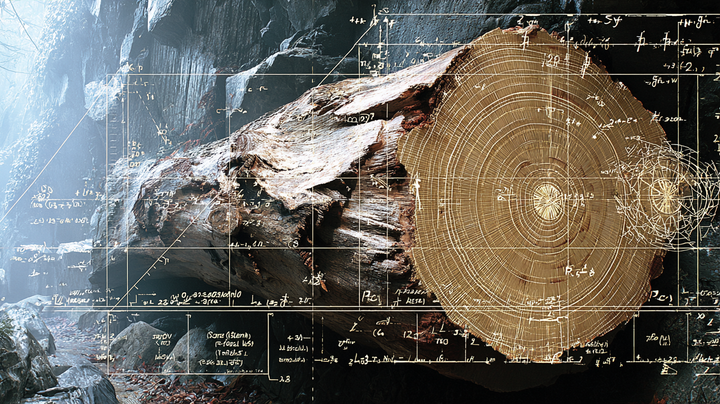Did Immortal Aliens Engineer Humanity?

If a civilization lives long enough, a million years is not a long time. What looks like deep time to us might be a single research cycle to them...
Core Hypothesis
An immortal or near-immortal civilization seeded or edited early hominins to run a long-horizon experiment. Their aim was to watch a young species discover energy, build tools, and form culture from local resources, while they already possessed anti-gravity and zero-point energy. The central question of their study was not whether we could copy them, but whether we could invent our own path from the constraints of Earth.
Premises of the Experiment
- Immortal observers
Lifespans that span geological epochs, with memory architectures that avoid cultural amnesia. For them, a million years equals a few strategic cycles. - Non-interference rule with periodic nudges
The experiment allows light constraints and rare interventions, not continuous hand-holding. Think seeding, boundary setting, and then long periods of observation. - Local-resource innovation mandate
Success requires developing energy from Earth first (fire, biomass, hydrocarbons, fission, solar, wind), only later converging toward cleaner asymptotes that rhyme with zero-point concepts. - Signal capture
The observers log culture, language, myth, and technology emergence as much as genetics. They care how we think, not only what we build.
Possible Design of the Study
Phase 0: Substrate prep
- Site selection favors a magnetically active planet with a large moon, diverse biomes, and cyclical stressors that drive adaptation.
- Baseline fauna established, then left to diversify. Catastrophes are not prevented, they are part of the stress testing.
Phase 1: Genetic nudge, minimal edit
- Edits target cognition, social inference, vocal tract control, sleep architecture, and neoteny.
- The goal is a brain that can simulate futures and share them through language and art.
Phase 2: Cultural ignition
- Early symbolic behavior emerges. Observers watch for teaching, imitation fidelity, and cumulative culture.
- Occasional myth-seeding events plant archetypes of sky teachers or law-givers without leaving overt tech.
Phase 3: Energy staircase
- The intended path rises in discrete steps: fire, agriculture, craft metallurgy, hydro, steam, hydrocarbons, electricity, fission, renewables, and then something closer to field engineering.
- Each step tests ethics, cooperation, and ecological feedback sensitivity.
Phase 4: Contact tests
- Before any full reveal, the observers probe memetic resilience. Can a civilization handle paradigm shock without collapse or violent scapegoating?
- Metrics include social trust, scientific literacy, and global coordination during shared risks.
Variables They Might Be Measuring
- Time to invention for each energy step.
- Tradeoff management between growth and planetary health.
- Moral circle expansion from kin to species to biosphere.
- Cognitive diversity and tolerance for dissenting ideas.
- Symbolic compression, the ability to encode big truths in small stories.
Why Not Just Give Us Anti-Gravity?
- They already know anti-gravity works. The experiment asks a different question.
- If given advanced tech without earning it, most young species externalize costs and break their home world.
- Innovation under constraint reveals deeper traits, like patience, foresight, and stewardship.
The Weird Breadcrumbs People Point To
None of these prove anything on their own. In a speculative frame, they become “interesting if true” clues.
- Cognitive leap puzzles
Rapid expansions in symbolic behavior and tool complexity cluster in bursts. Mainstream views explain this with culture and environment, which fits, but a designer could have timed nudges to those windows. - Chromosome 2 fusion
Humans have a fused chromosome that our closest relatives do not. Biology provides natural mechanisms for this, but a designer could choose a large, stable genomic flag that also impacts development. - Bottlenecks and introgression
Population bottlenecks and cross-lineage gene flow complicate our tree. Natural history explains them, yet they also look like moments when an experimenter might consolidate or mix lines to steer traits. - Myths of sky-teachers
Cultures across continents carry stories of beings from the sky who teach agriculture, law, or cosmology. These could be archetypal human storytelling patterns, or carefully placed memetic stabilizers.
(Again, each of these has solid natural explanations. We are exploring the “what if” lens here, not asserting proof.)
Falsifiable Predictions You Can Watch For
- Archaeo-engineering out of stratigraphic place
A small number of artifacts with anomalous materials science, deeply buried, designed as “time capsules,” not tools of conquest. - Non-random global myth kernels
Statistical commonalities in first-law type myths and sky-teacher motifs that exceed what diffusion models predict. - Silent beacons
Long-lived, power-frugal devices at Earth-Moon Lagrange points or in high, stable orbits that only ping during rare astronomical alignments. - Ethical gating
Breakthroughs in field manipulation or vacuum energy appear only after our societal coordination and ecological indicators cross a threshold, not before.
The Ethics of the Lab
- Consent problem
Did an ancestor species agree on our behalf, or is this non-consensual uplift? - Harm mitigation
Interventions that reduce suffering without collapsing the test. For example, quiet nudges that prevent extinction events that come from our own immaturity, while still letting us face consequences. - Graduation criterion
The experiment ends not when we match their tech, but when we demonstrate wisdom, restraint, and care for nonhuman life.
Counterpoints, Opposing
- Natural selection plus culture explains cognition and tech without external designers.
- Human pattern hunger finds sky-beings everywhere, even when none exist.
- Advanced civilizations would avoid biological tinkering due to unknowns, and would study us non-invasively.
- If they wanted a clean experiment, our modern information chaos would make results noisy, which undermines the study.
Reply from the speculative view
Noise is the point. Robust intelligence should emerge under noise, not in a lab vacuum. If anything, today’s chaos is the ultimate stress test for wisdom.
What If We Are Near the Mid-Term Review?
Imagine we are halfway through the trial. Our energy staircase is peaking on fossil fuels while renewables accelerate. We face a coordination exam. Pass, and the next plateau opens. Fail, and the experiment resets through a hard lesson, not extinction, but contraction.
How We Might “Pass”
- Build energy abundance that does not cannibalize the biosphere.
- Treat information as critical infrastructure, increase truth-detection literacy.
- Expand moral circles while preserving diversity of thought.
- Make planetary restoration part of our identity, not a niche project.
- Demonstrate we can hold paradox: fierce innovation and deep restraint at once.



Comments ()